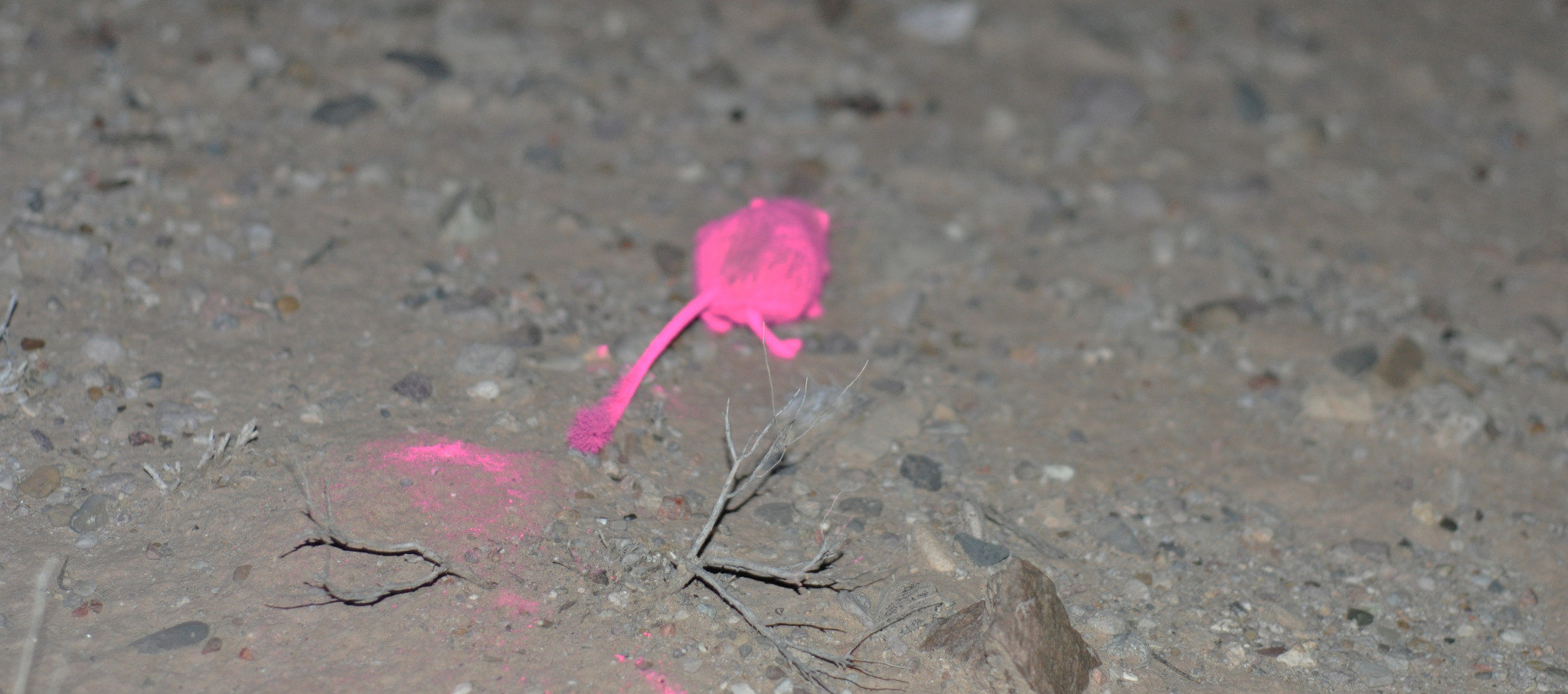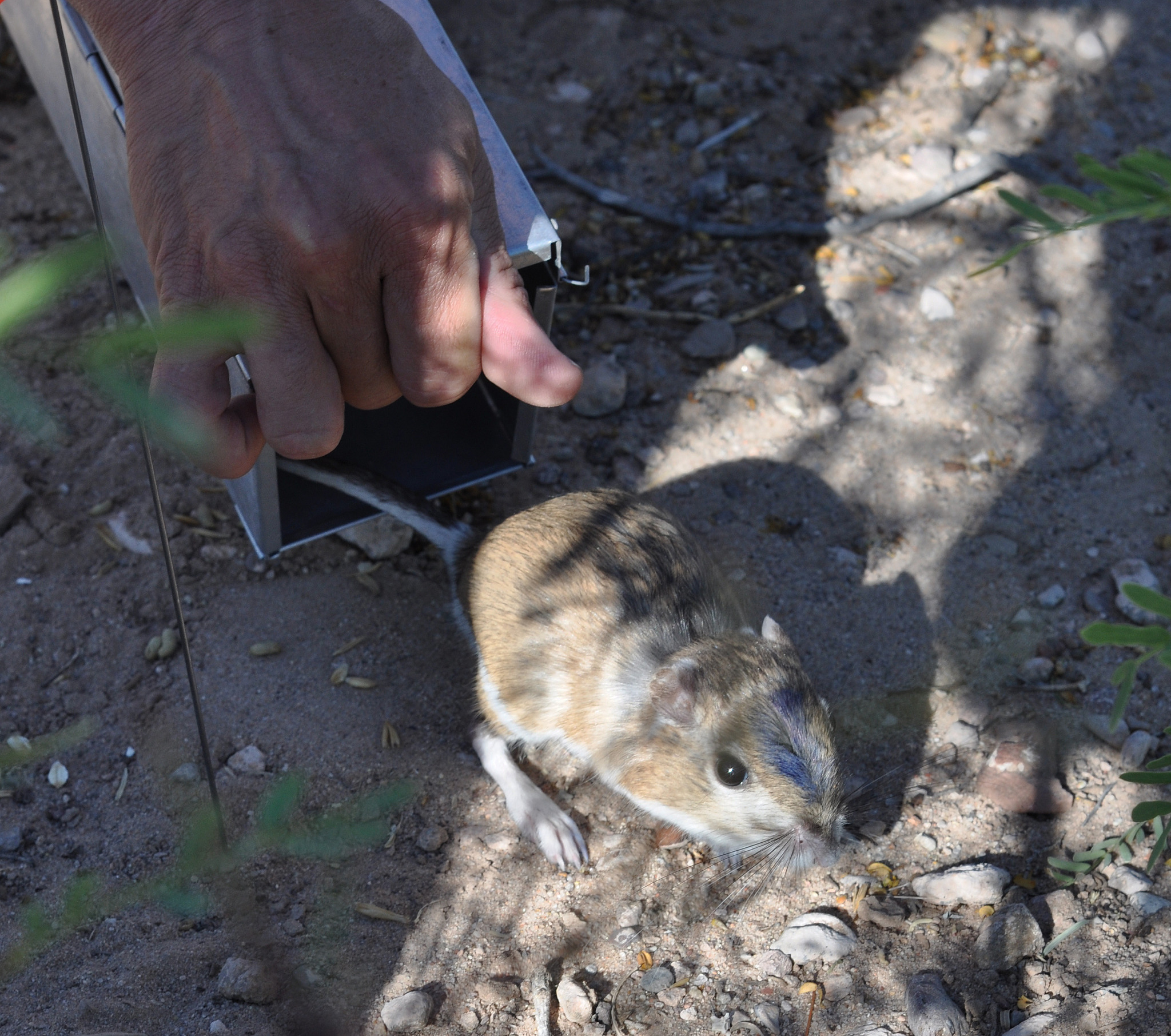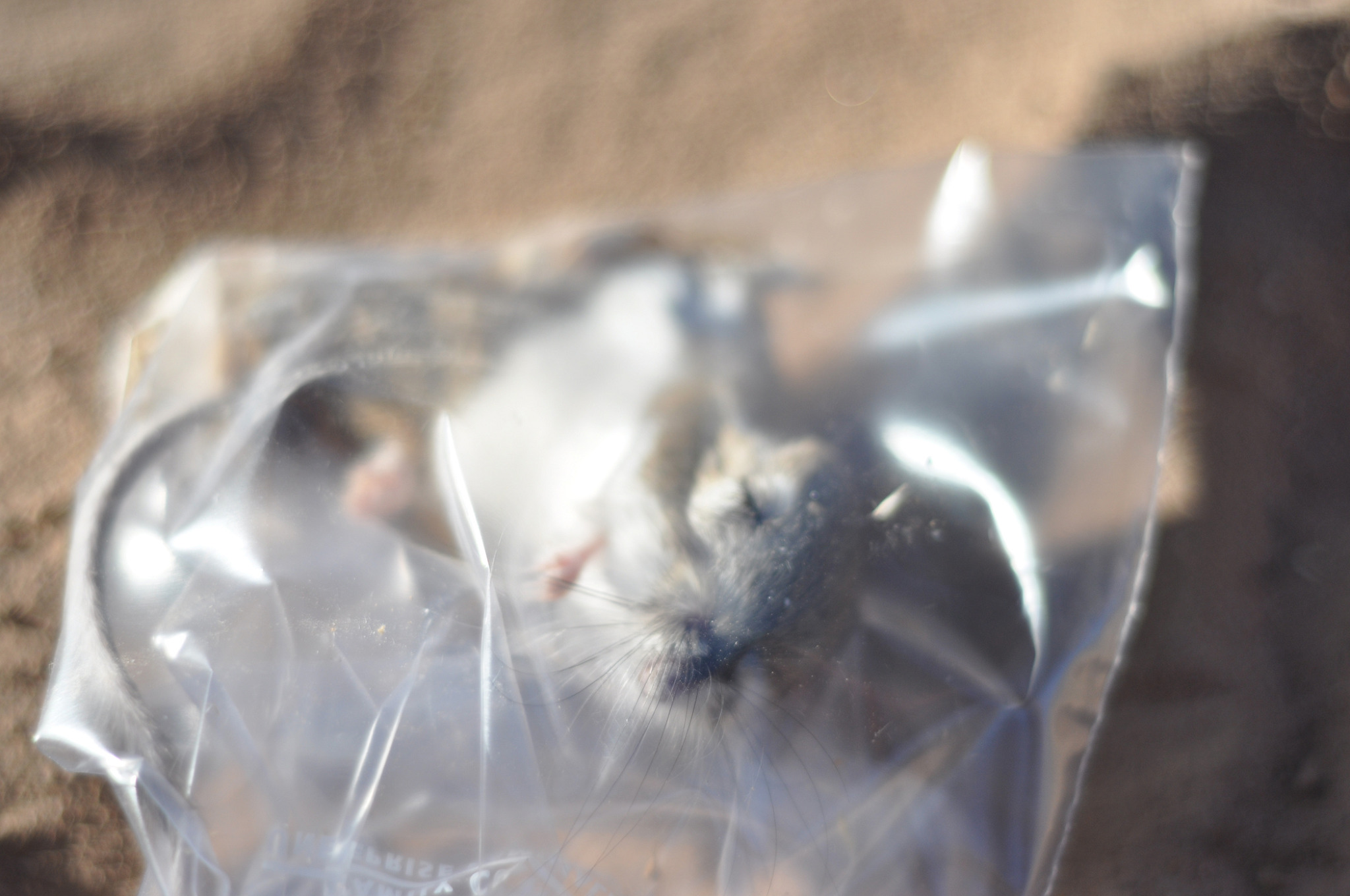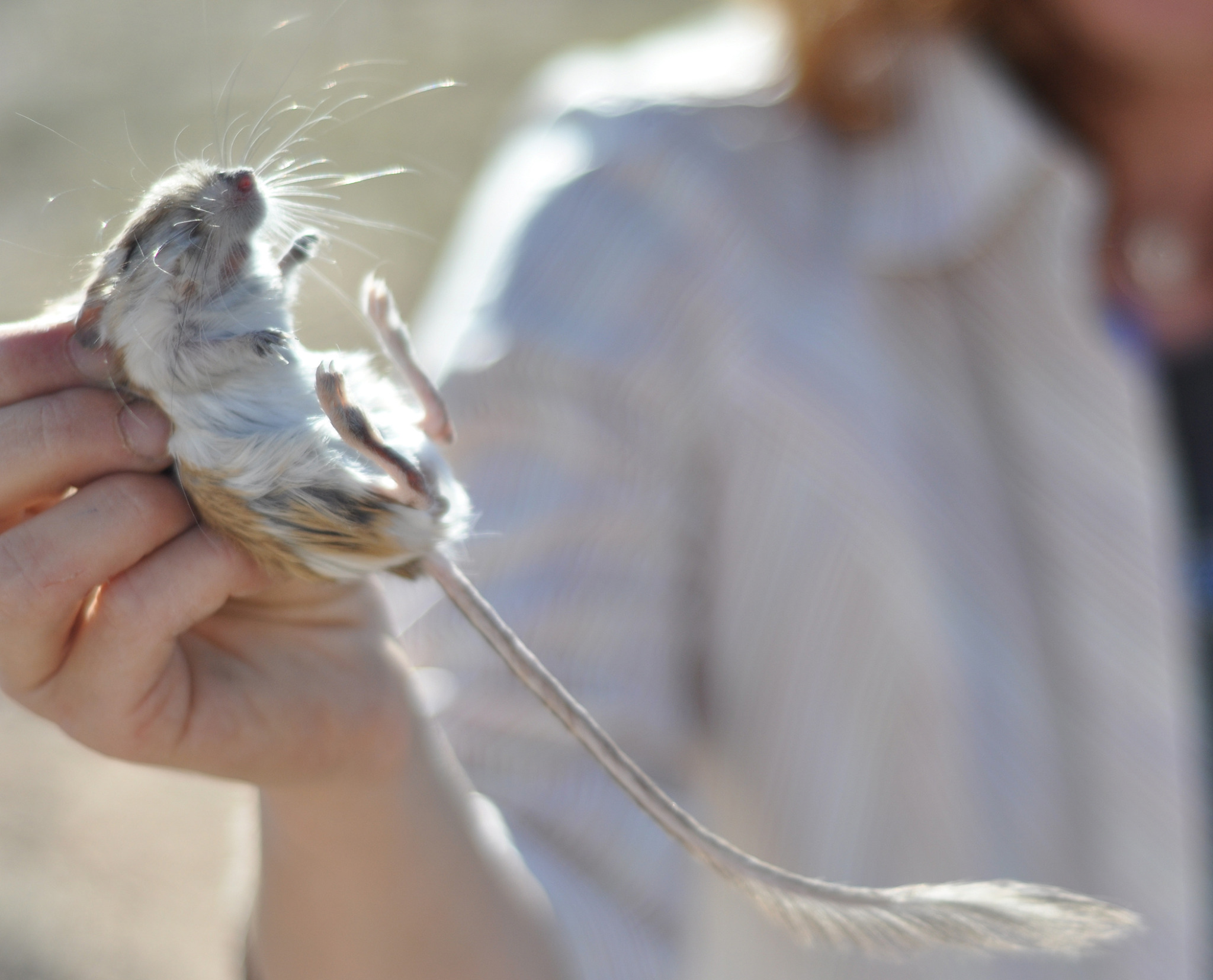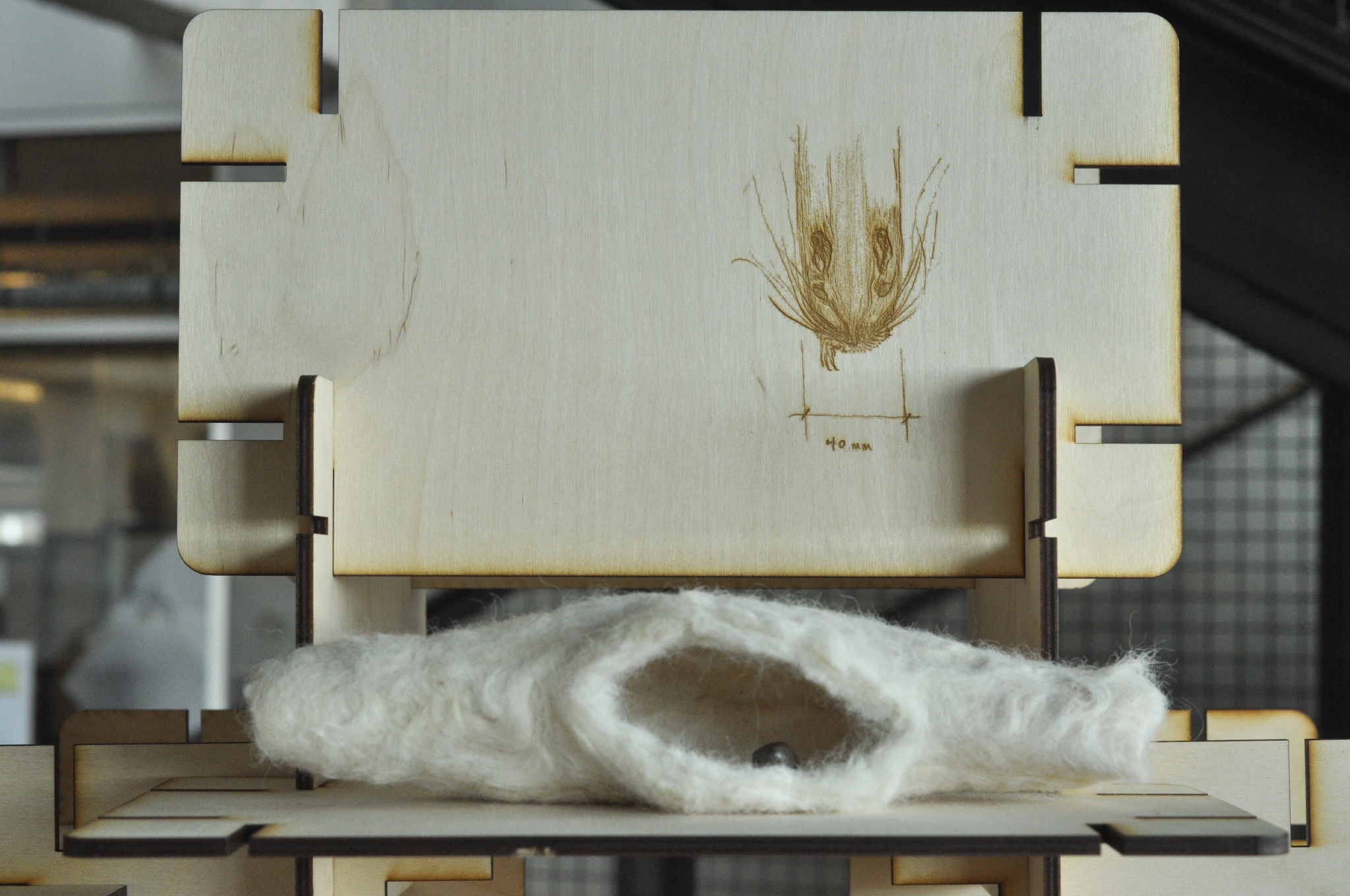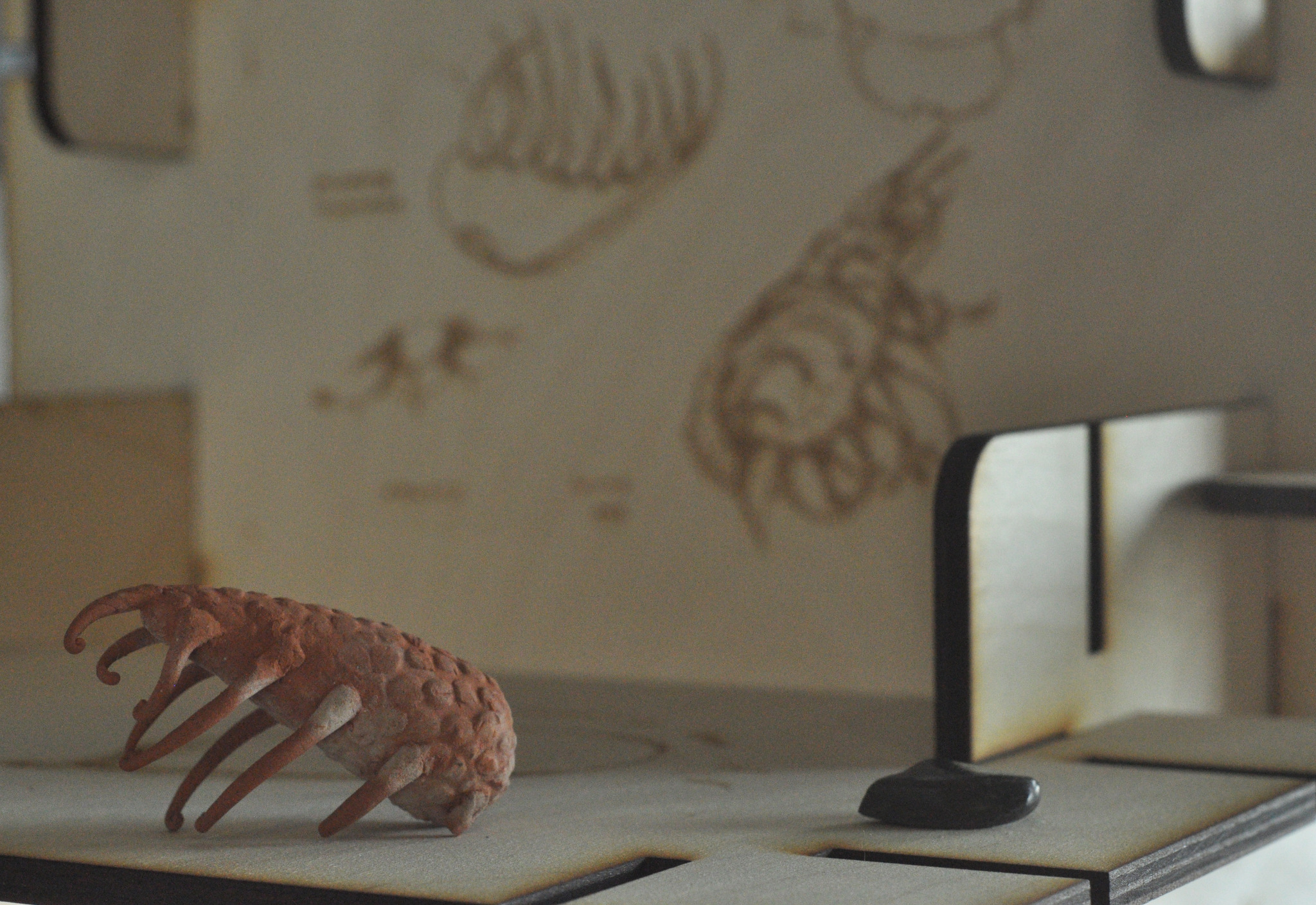Trans-species
Kangaroo Rats at the Sevilleta National Wildlife Refuge
Catherine Page Harris
2017
2017
Kangaroo Rats at the Sevilleta National Wildlife Refuge
Installation:
Outside, representations of the kangaroo rats’ seed hording provide comparison experiments in seed germination. The larger kangaroo rat’s D. spectabilis’ mounding habit, replicated with terracotta passages and volumes created from local clay dug in the Albuquerque area, provides underground water storage. The smaller kangaroo rat, D. mirrami’s scatter hordes, provide open water pooling.
Inside, the project presents a layered installation of drawings, felted wool seed pouches and fired local clay seed sculptures, with sound from
kangaroo rat mounds. These objects are inspired by the process of studying an ecology as a relationship.
The project represents not only the rat and its morphology, but the interactions of the soil seed bank, germination of plant species, hording behaviors, scientists seeking knowledge about climate change through close study of the desert and its denizens, and artists seeking an understanding of culture through the tools of science.
Thank you to Scott Collins, PhD, Director of the Sevilleta Long Term Ecological Research site, to Jeannine Kimble and The Fish and Wildlife Service for space, to Eso Robinson and Nina Dubois for technical support, and to the School of Architecture and Planning for use of their facilities to produce the shelving. Thank you to all of our collaborators, and to the members of the Sevilleta dipodomys community for offering their information to us.
Kangaroo rats have many adaptations for living in all of the major deserts of North America. Kangaroo rats have fur-lined cheek pouches that reduce water loss, a modified kidney to concentrate urine and a digestive system that allows them to acquire water from seeds. In addition to these adaptations, kangaroo rats have large hind legs and a tail almost twice as long as their body that helps them escape predators and navigate the desert at night in search of food.
Kangaroo rats forage predominately on seeds. Seeds that they carry in their cheek pouches are stored (“cached”) in either larderhoards or scatterhoards for later consumption. Larderhoards are caches of seeds that are buried in their burrows at a depth that prevents the seed from germinating. Scatterhoards are small shallow pits that are ‘scattered’ across the desert where the seeds can germinate if they are not consumed. The large banner-tail kangaroo rat is a larderhoarder. The most common species at the Sevilleta, Merriam’s kangaroo rat, is a scatterhoarder.
Keystone species provide opportunities for other species to live in habitats where they might not exist otherwise. At the Sevilleta, the banner-tail kangaroo rat is considered to be a keystone species. In addition to gathering and storing seeds, kangaroo rats construct large burrowing systems called mounds. Banner-tail kangaroo rat mounds contain different plant, lizard, and arthropod species than the surrounding undisturbed desert. Also, kangaroo rats create patchy plant distributions and large stores of seeds in the soil that may germinate and grow sometime in the future. Because kangaroo rats can have a big impact on desert ecosystems they are considered to be keystone species in the Chihuahuan Desert.
This educational art installation was funded by a RAC (Research Allocations Committee) Grant from the University of New Mexico. The Division of Mammals in the Museum of Southwestern Biology (MSB) at UNM provided the kangaroo rat skins and skeletons. The MSB Division of Plants provided specimens of plant species and their seeds.

